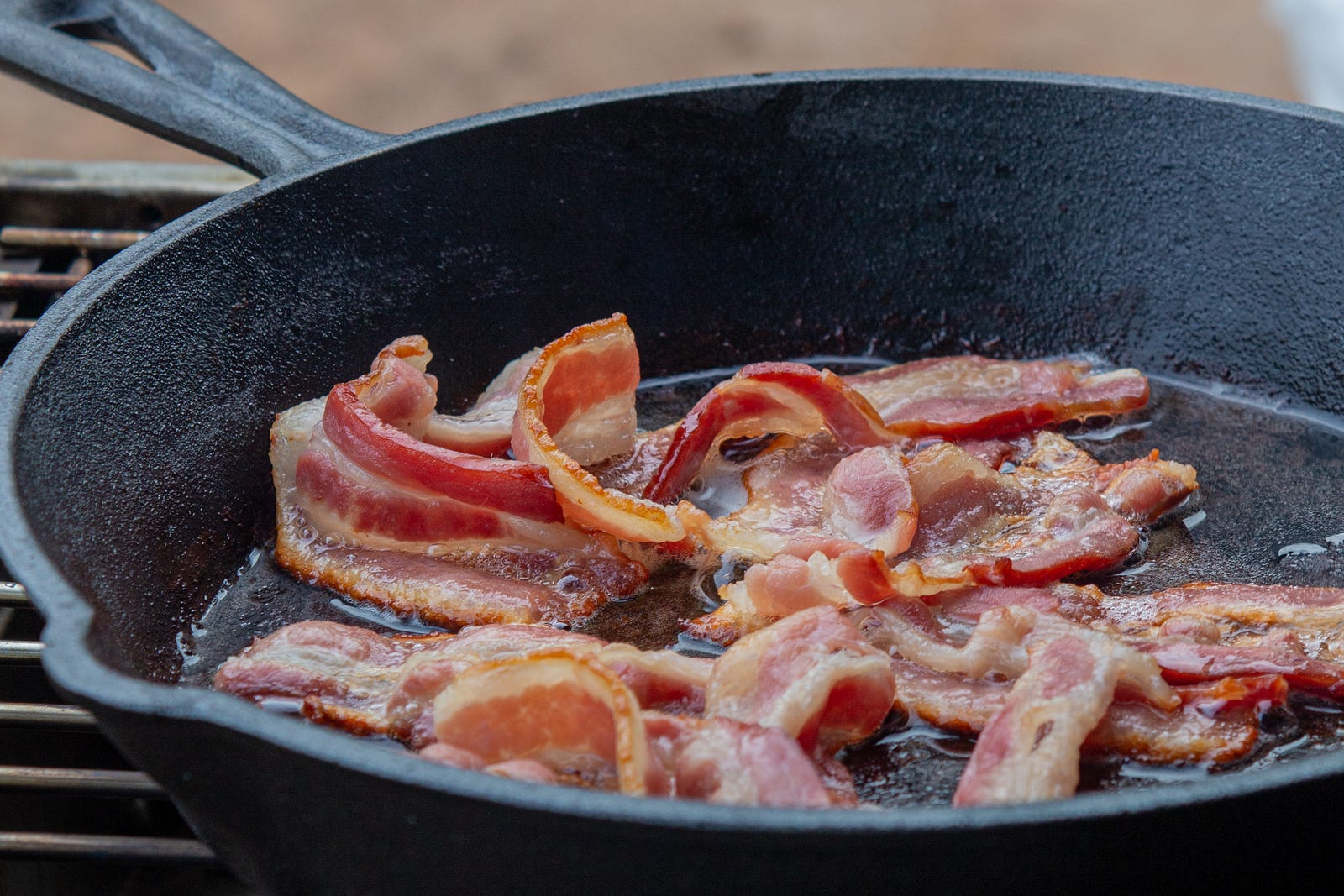Should you track net carbs or total carbs?
When you’re on the ketogenic diet, your main goal is to keep your carbs as low as possible to induce ketosis.
Some people on keto, usually beginners, only measure total carbs.
However, total carbs include the carbs that come from fiber & artificial sweeteners.
However, net carbs are another way to measure how many carbs are in a food item.
To know how many net carbs you should be eating on keto, you have to add up all of your total carbohydrates and subtract the grams of fiber and sugar alcohols (like erythritol or maltitol) from that number.
In this article you’ll learn why you should track net carbs instead of total carbs, & how many net carbs you should eat to lose weight on keto.
What Is Keto?
The ketogenic diet is a low-carb, high-fat diet that was originally designed to help epilepsy patients achieve seizure control. However, the diet has a lot of benefits that can help you lose weight, increase energy, improve brain health, and reduce inflammation.
The primary goal of the ketogenic diet is to consume less than 50 grams of carbohydrates per day so that the body begins using fat as energy instead of carbohydrates as energy.
In order to achieve this, you’ll be eating mostly fatty foods like meat, fish, eggs, vegetables, nuts, and low-carb vegetables like broccoli and cauliflower.
Ketosis is a metabolic state where your body burns fat for energy instead of sugar, sparing your cells from insulin resistance so that you stay lean and healthy.

What Are Net Carbs?
Net carbs are the total carbs in a food item minus the grams of fiber and sugar alcohols (like erythritol or maltitol.) So, if a food has 15g of total carbs, 7g of fiber, and 3g of sugar alcohols, then that food has 5g of net carbs.
You can’t just look at the net carb amount and say “Wow! I’m consuming a lot of carbs!”
Sure, you’re consuming carbs, but you’re also consuming fiber and sugar alcohols. You need to consider the whole food to get a true picture of your carb consumption.
How to Measure Net Carbs
If a food’s net carb count isn’t listed, then you’ll have to measure the food’s carbs by subtracting the grams of fiber and sugar alcohols from its total carbs.
Sometimes, foods with artificial sweeteners, like Diet Coke, don’t list the amount of artificial sweeteners on the nutrition label.
Then, you must use your own judgement to subtract the artificial sweeteners from the carbs yourself.

How Many Net Carbs Should I Eat To Lose Weight on Keto?
On keto, you should aim for around under 40 grams of net carbs per day to lose weight. 40g of net carbs is low enough that you should be able to enter ketosis even if you eat more than the recommended amount of protein.
However, this varies depending on your insulin sensitivity and other factors. If you’re insulin resistant, then you may not be able to lose weight on keto as quickly.
If this is the case, then you may need to aim for slightly lower net carbs.
Why Track Net Carbs Instead of Total Carbs?
Total carbs include all the carbs in a food, including fiber & artificial sweeteners. Net carbs, on the other hand, are a more accurate way to track your carb intake because it accounts for the amount of fiber and sugar alcohols in the food, which have zero calories.
If you just look at the carb count, you’ll be fooled into thinking you’re consuming a lot of carbs when, in reality, you’re consuming very few net carbs.
For example, a salad may have around 10 grams of total carbs, but let’s say 8 grams of that would be fiber.
So if you were to only count total carbs, then you would be avoiding healthy foods like salads.

How Many Calories Should You Eat To Lose Weight on Keto?
Generally, for weight loss, you want to consume about 500 calories less than your maintenance calories, which is around 1,500 calories per day for the average person.
If you’re a bigger person & you workout more, you could eat a little more calories & still lose weight.
However, if you’re a smaller person & don’t exercise too often, then you might want to eat less calories than that.
Traditional Calorie Restriction vs Intermittent Fasting
But, it’s better to restrict the time period you eat, like with intermittent fasting, than it’s to restrict calories.
This is because intermittent fasting helps you reduce calories and insulin at the same time, meaning you won’t be as hungry as much since you’d be going deeper into ketosis.
If you’re interested in starting intermittent fasting on top of keto, here’s my article detailing the benefits & how to start.
Conclusion
When you’re on the ketogenic diet, your main goal is to keep your carbs as low as possible to induce ketosis. Some people on keto, usually beginners, only measure total carbs. To know how many net carbs you should be eating on keto, you have to add up all of your total carbohydrates and subtract the grams of fiber and sugar alcohols (like erythritol or maltitol) from that number.
You should aim for around <40 grams of net carbs per day to stay within ketosis. However, if you have insulin problems or want to lose weight faster, you could lower that number further.
If you’re interested in starting a keto diet or learning more about its benefits, you can read my article discussing the topic here.
- Can You Still Lose Weight If You Aren’t in Ketosis? - February 8, 2023
- Can the Keto Diet Help With Depression? - February 8, 2023
- Why Does Processed Food Make You Fat? - January 2, 2023




